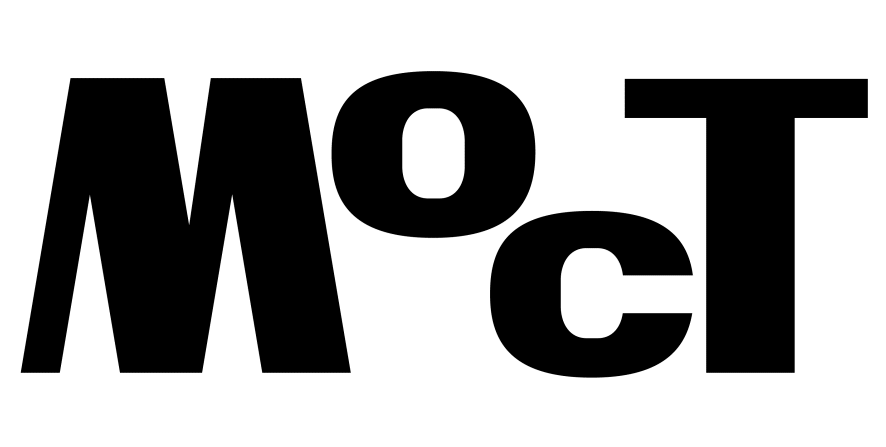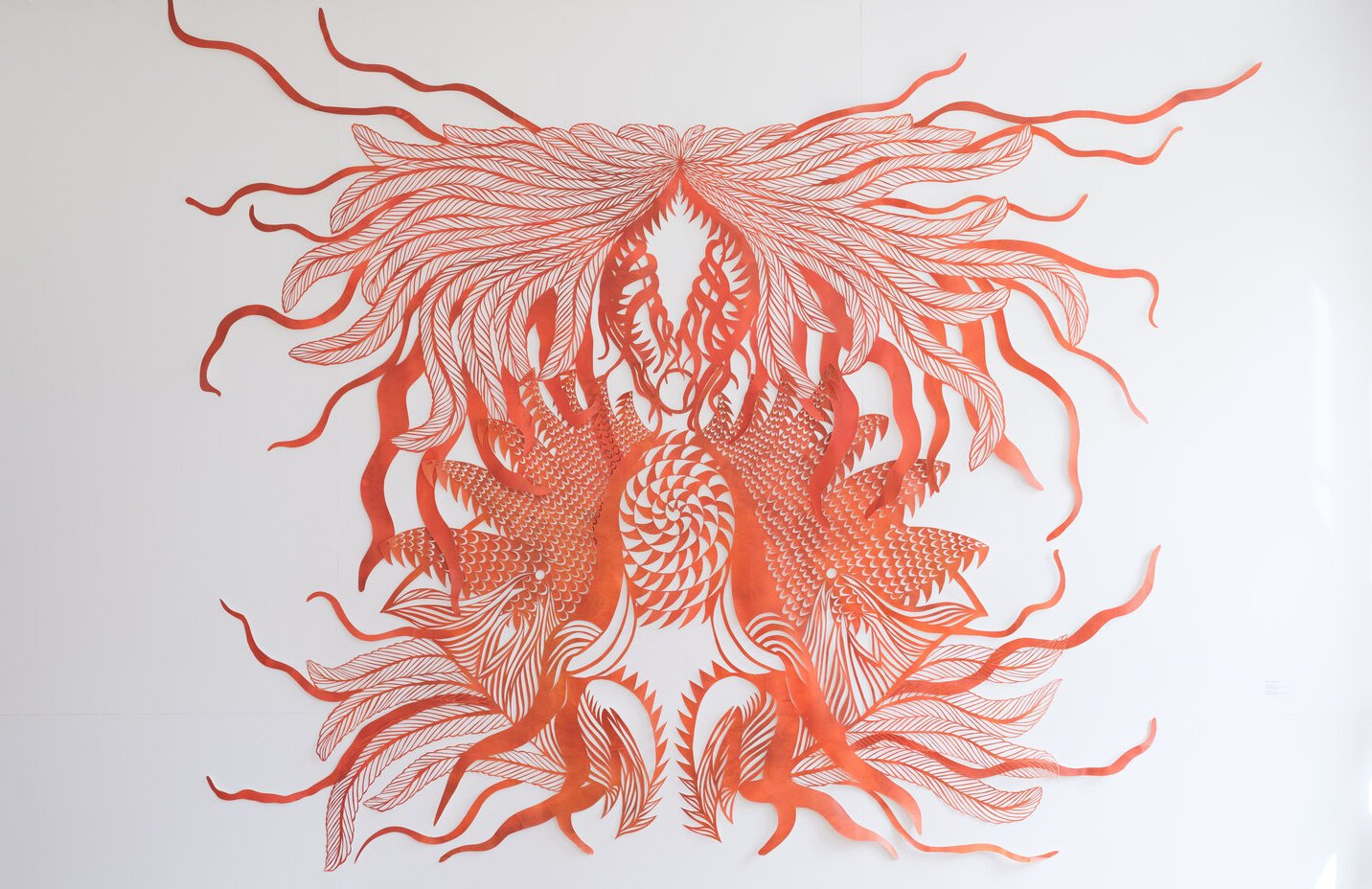Alisa Bakalova
The title for this text, Girlhood is a Spectrum, is my take on the exhibition, Lushness. Women’s Art in the 21st Century. It came to me from a core realization that growing up and becoming oneself is not a linear or standardized process. It’s not a fixed story with clear chapters like “innocence,” then “awakening,” then “maturity.” Instead, it unfolds in a multitude of emotional states, sometimes contradictory, that exist simultaneously. Within the spectrum, vulnerability and defiance, naivety and sharp awareness, fear and boldness all live together, often without neat borders between them. One moment might hold a fierce desire for independence, and the next a deep longing for protection. It’s not about ticking off stages of development, but about experiencing and navigating a complex emotional landscape that rarely fits the traditional narratives of what “growing up” for those identifying as “girl” or “woman” should look like. This is also not a show about the wisdom of womanhood across generations. The emotional web evoked here doesn’t stretch across time in a nostalgic sense but rather hums with the immediacy of now. Most of the artists are young, and it shows through the urgent tone of their work, because they are closer to the raw edge of figuring things out. There’s no pretense of resolution, and maybe that’s what makes them connected as artists. Even if the topics create separation, there is a shared language of not uniting women just through similarity, but through a kind of mutual recognition, akin to “I’ve felt something like this, too.”
In Lushness, that spectrum is visible in the way the works move between moods, mediums, and intensities. Girlhood is presented not as a single voice but as a polyphonic reality: intimate and collective, soft and raw, shaped by personal experiences but always brushing against wider cultural expectations.

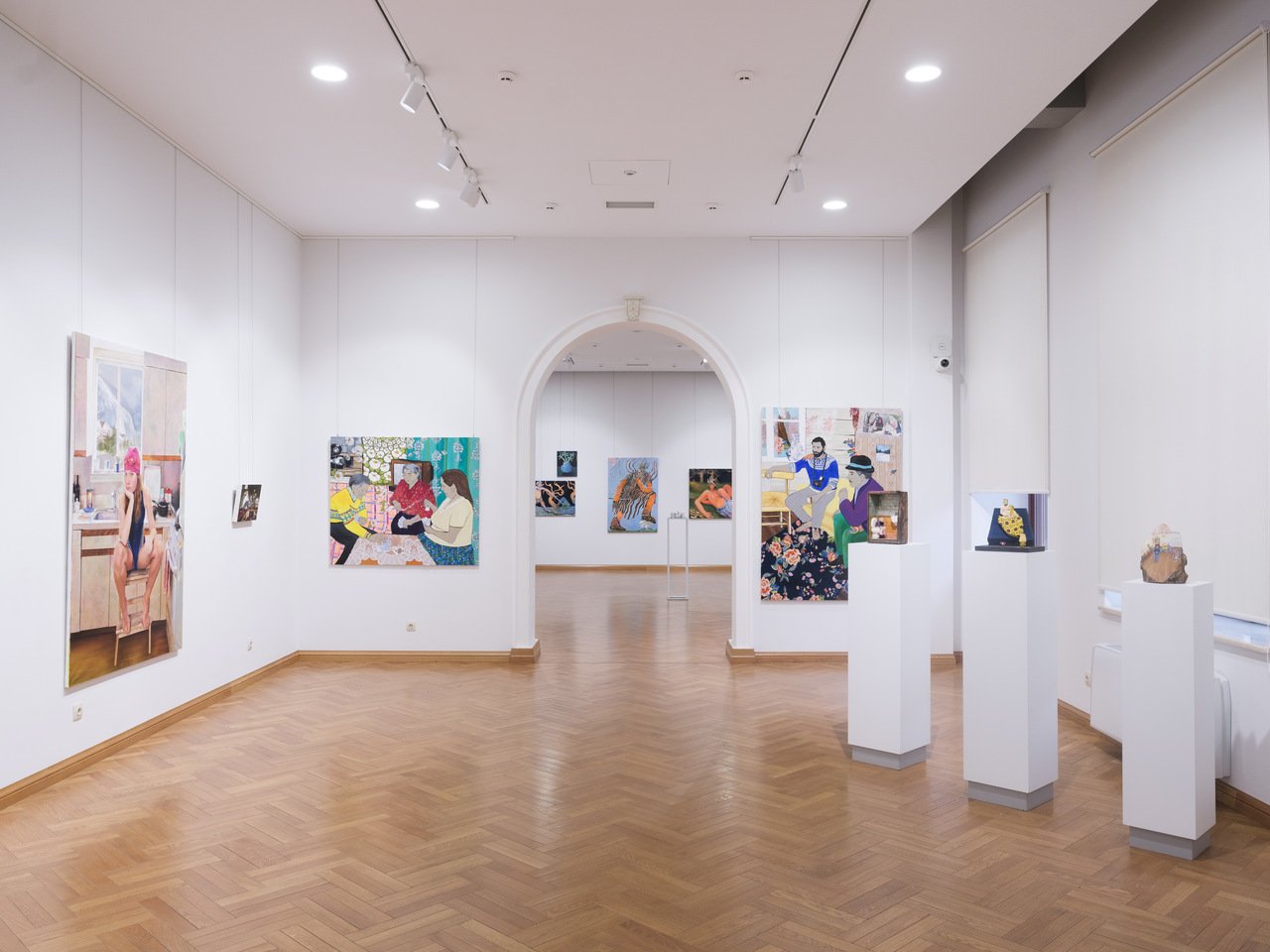
In viewing this exhibition, the intuitive lens felt essential. Although the feminine, corporeal, and mythological already seems like it opens a generous and self-explanatory space for interpretation, this is where I personally found the exhibition space a bit oversaturated. At first, this diluted the coherence of the show for me, and only after a while, it felt more like a map of coexisting micro-worlds. The selection of works spanned a pretty broad landscape of themes: the mundane, witchy mysticism, autobiographical fragments, the erotic, and the sacred. Like opening several books at once, not knowing which to follow first, and that feeling of both curiosity and overwhelm, is perhaps very close to the emotional density of the pluralities of girlhood that many of the works navigate: sometimes messy, sensual, often overwhelming, and always emotionally charged.
The exhibition was structured across four distinct rooms in the museum, with each space corresponding to a subtle thematic cluster. This spatial division helped organize the experience, even if the range of topics and aesthetic approaches initially felt overwhelming to me. The diversity of themes and visual languages created a sort of emotional and conceptual polyphony. So, after reading the curatorial text, I found it easier to connect the arrangement of the rooms with the exhibition’s underlying themes, and this orientation significantly enriched my experience of the works.
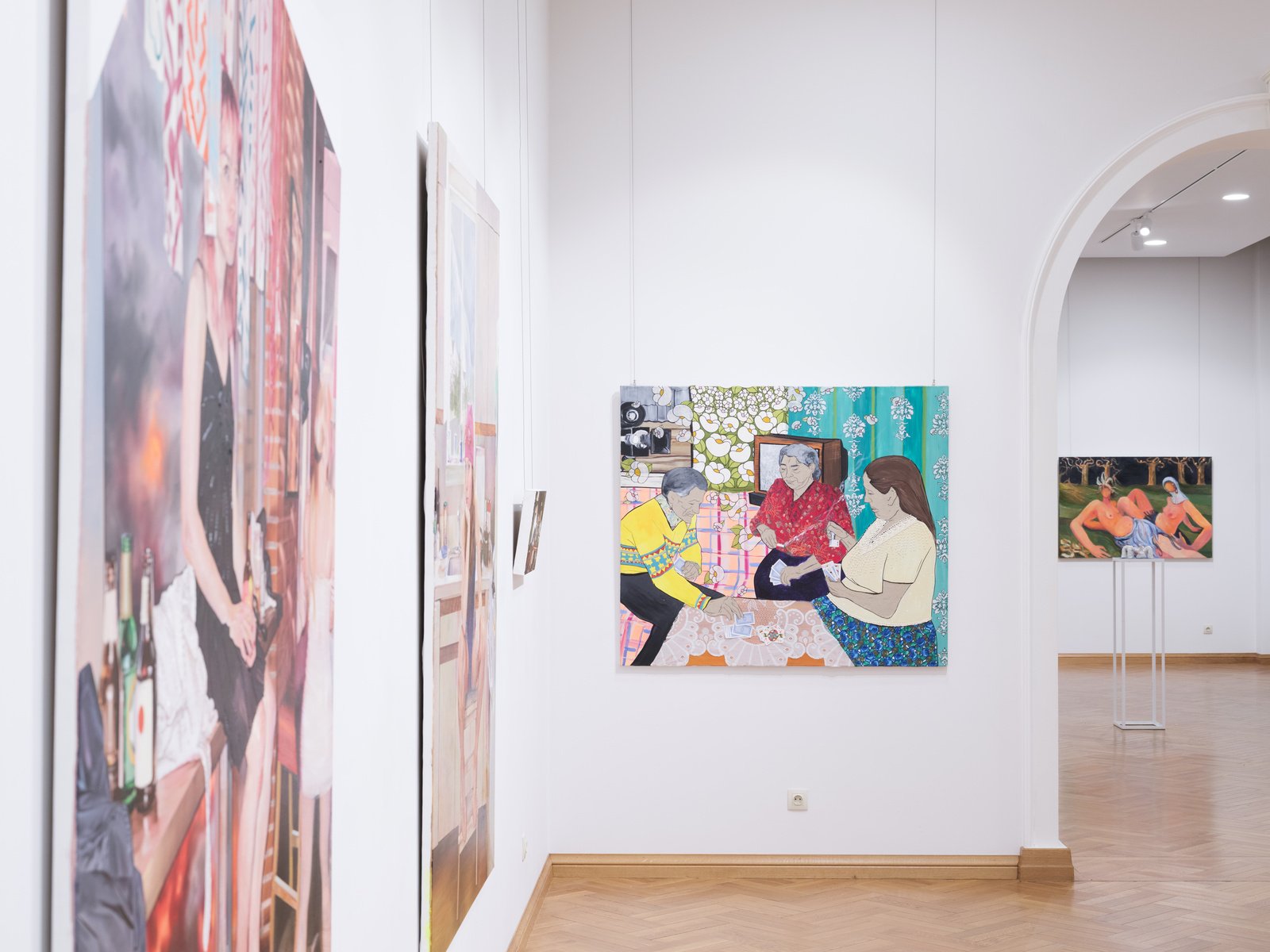
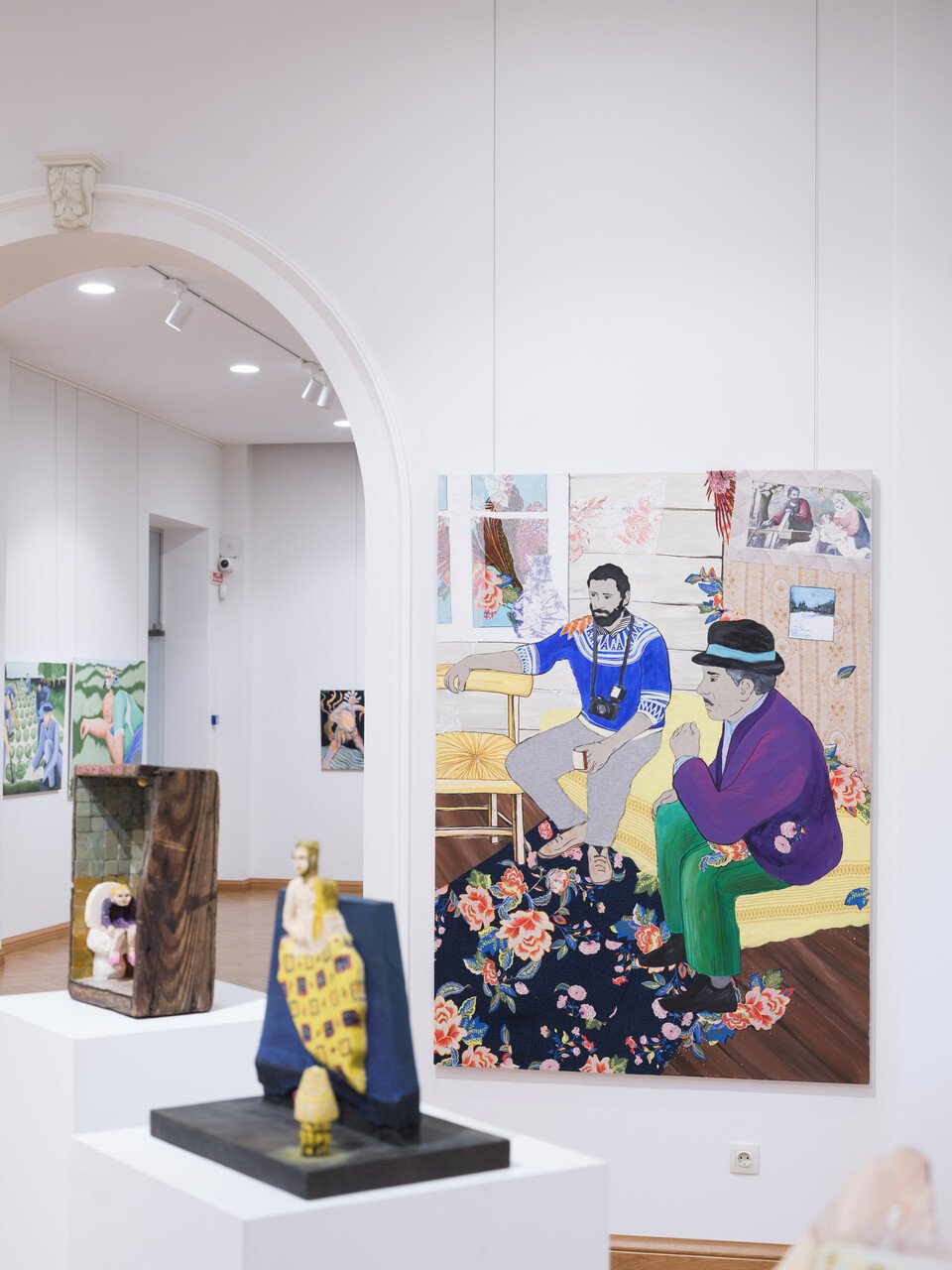

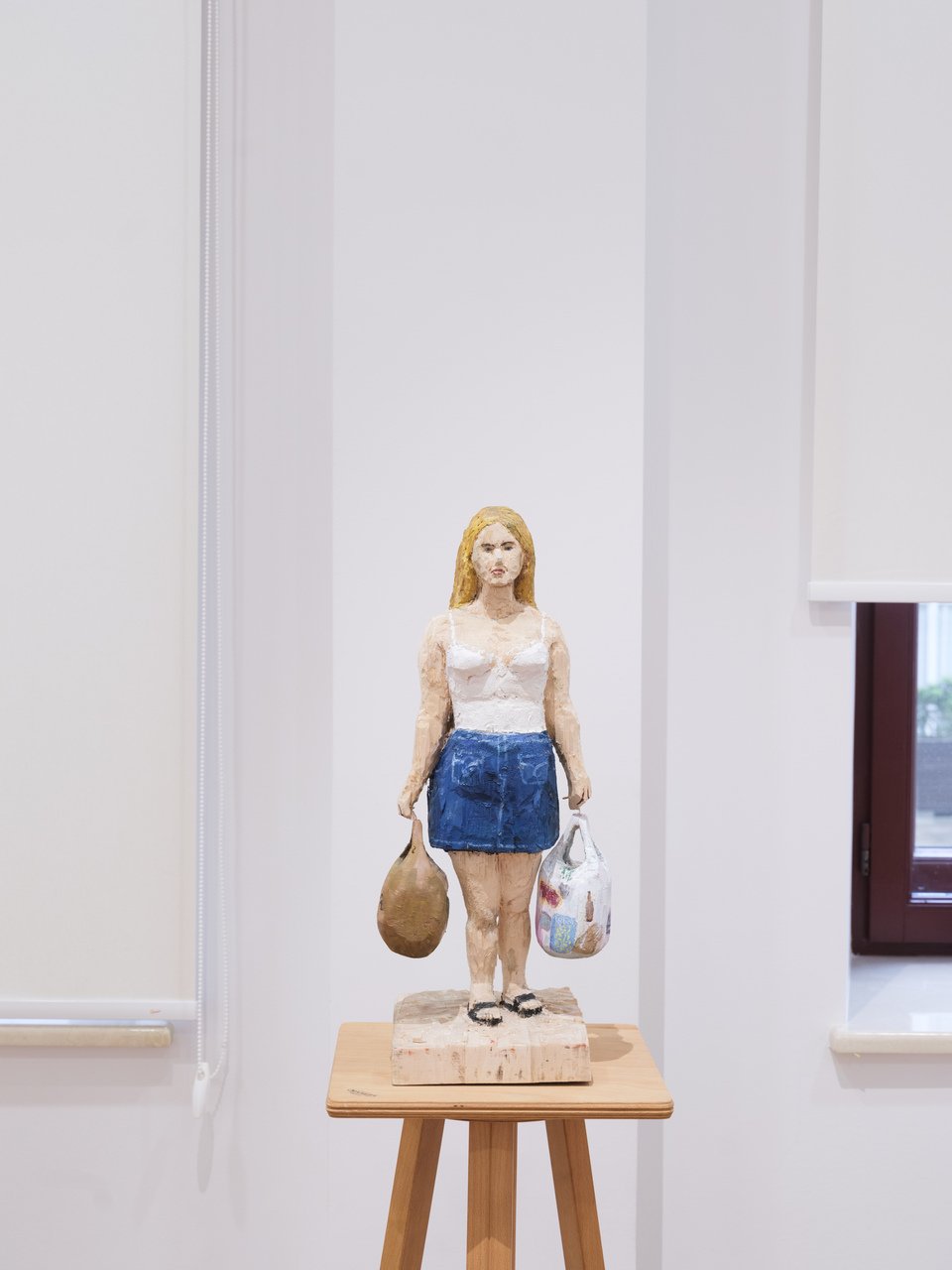
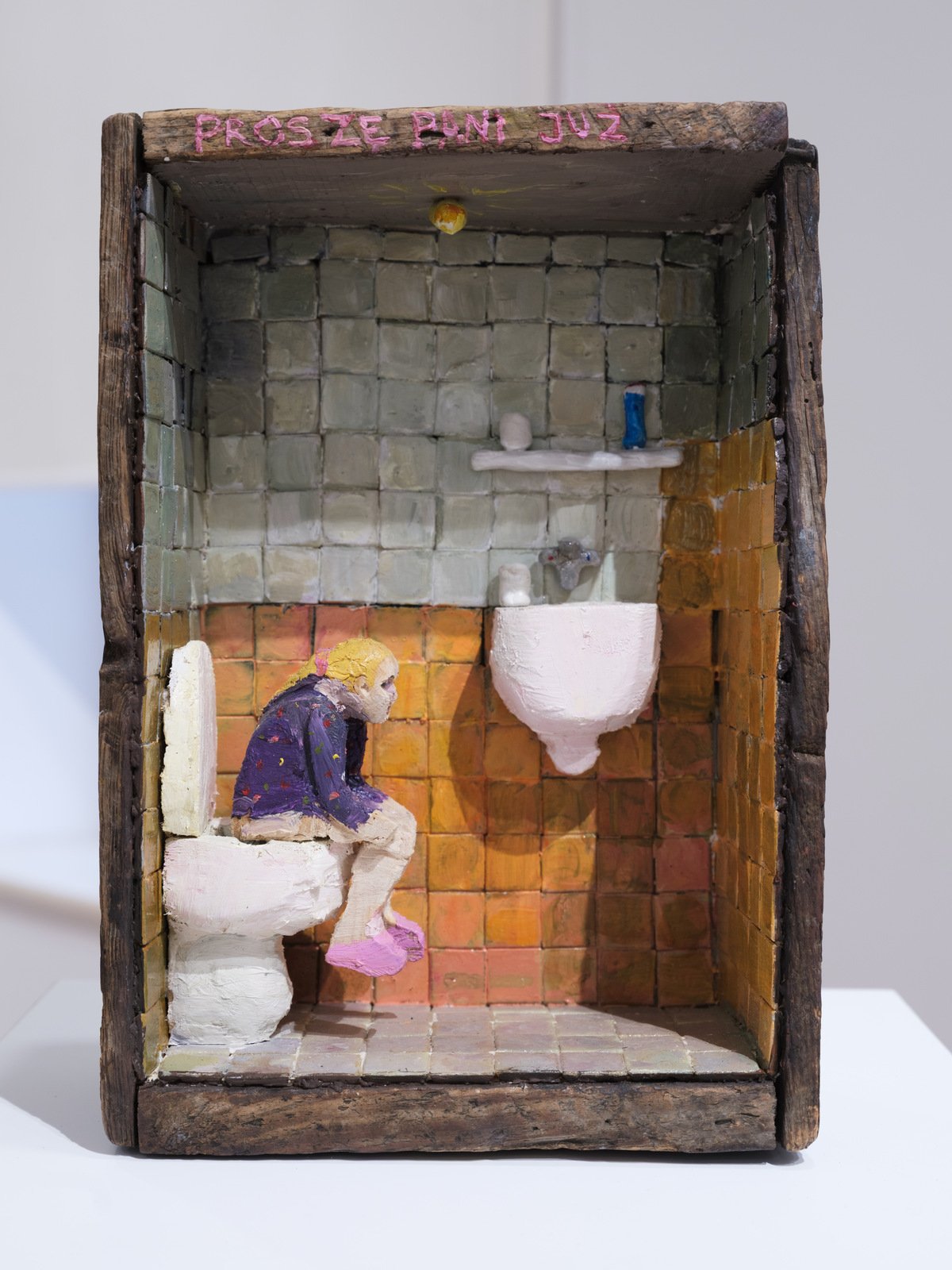

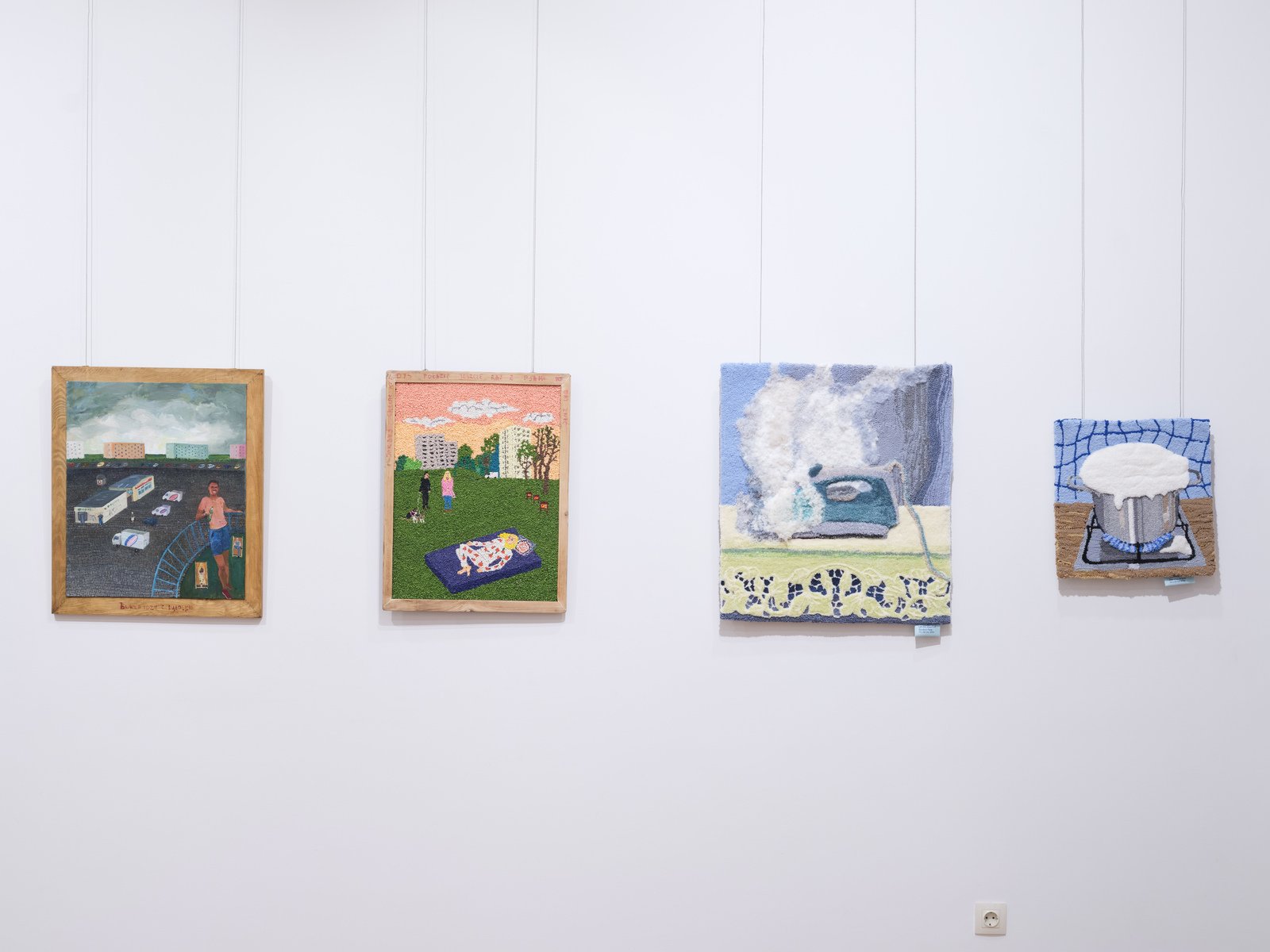
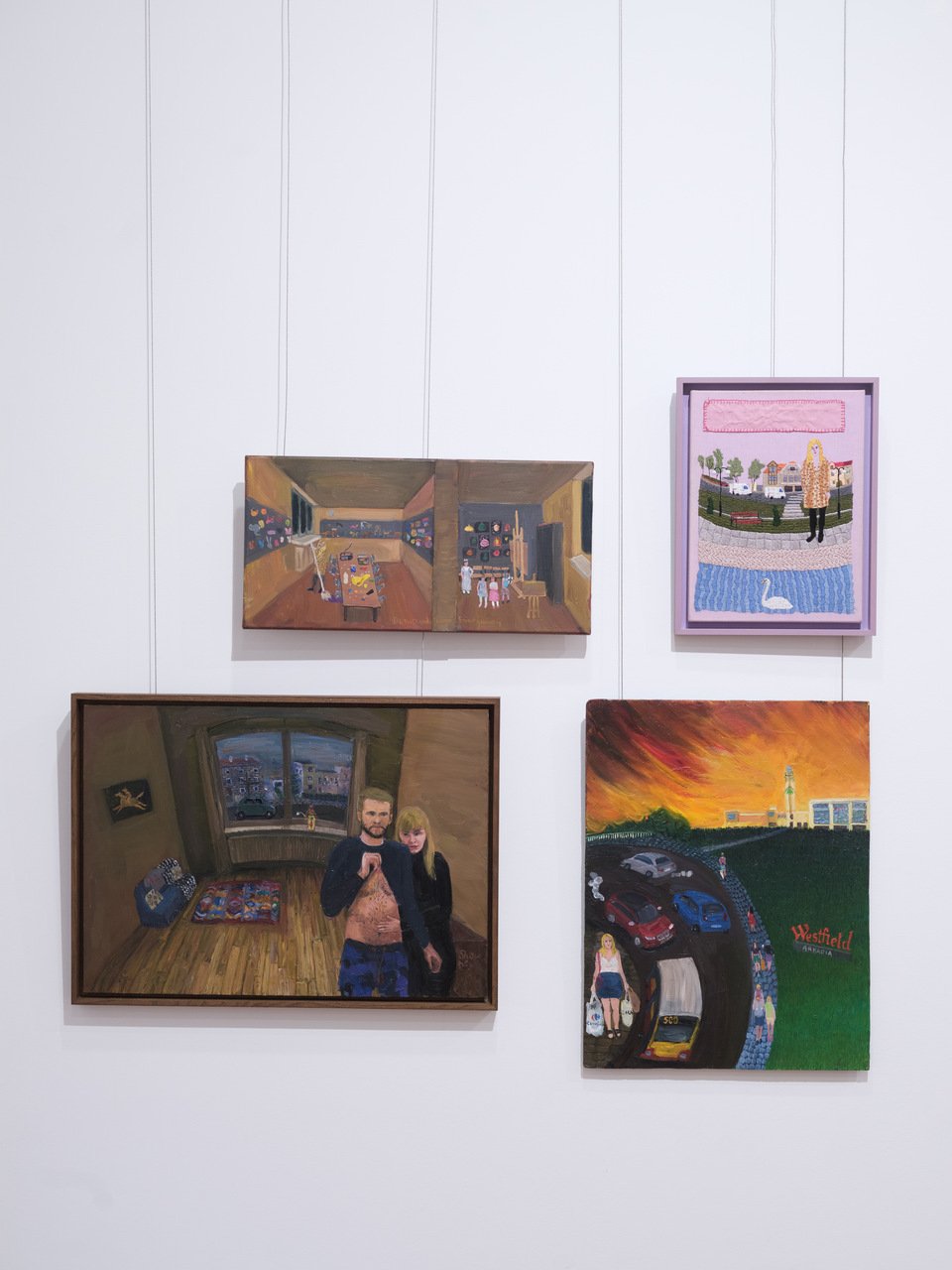
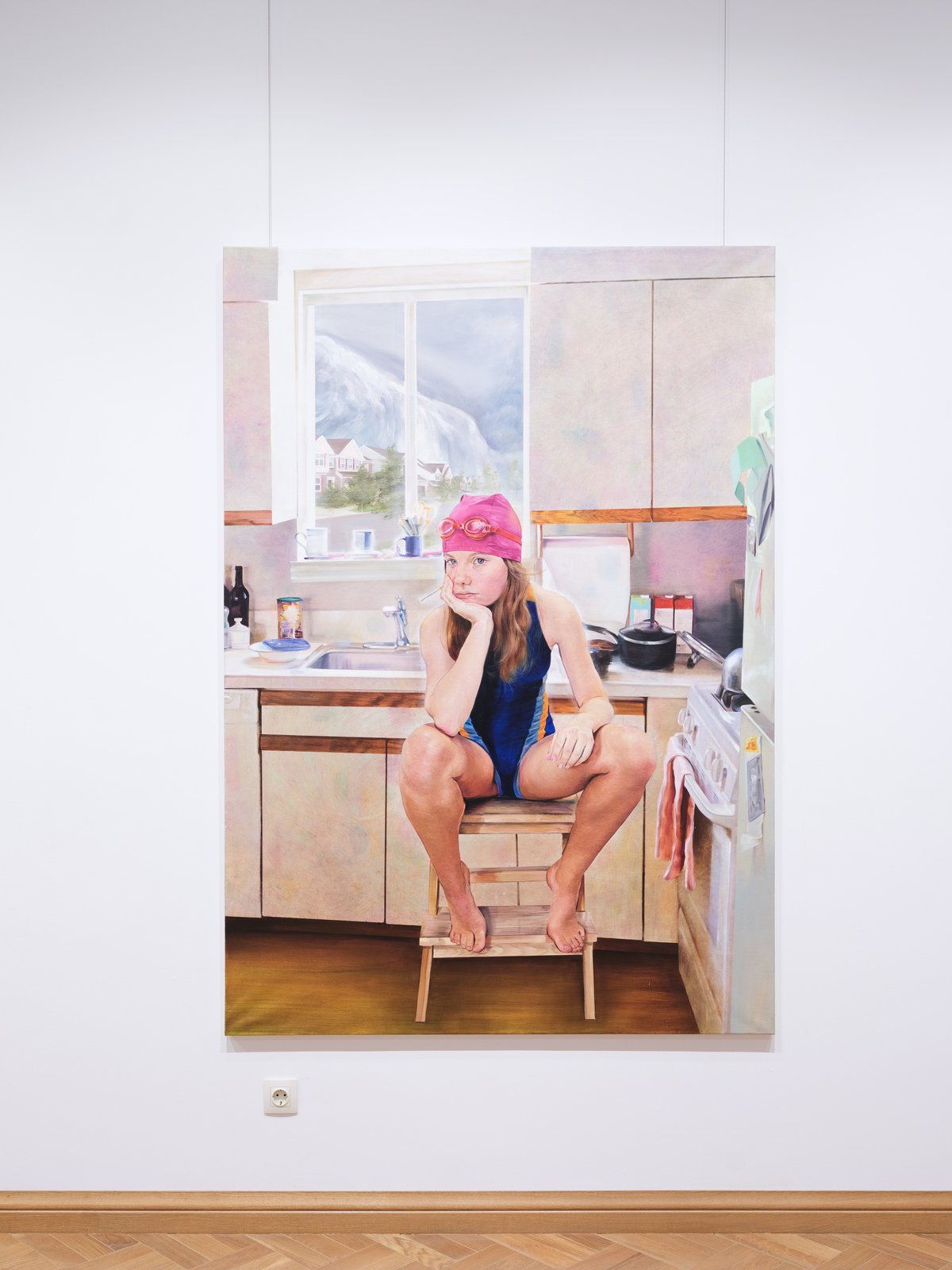

The first room, “Everyday Life”, focused on intimate portrayals of contemporary Polish life, with artists like Agata Kus, Marta Nadolle, Karolina Balcer, and Małgorzata Mirga-Tas presenting paintings and textile works that depicted family life, bohemian urban scenes, and Roma village culture. Mirga-Tas’ work, where gatherings of older women – playing cards, surrounded by floral patterns and familiar clutter, brought to mind Balkan and Eastern European domestic scenes. These were not generic depictions, but precise worlds. It was like catching a glimpse into a parallel universe where the décor, the color, the intimacy, felt universally known. Here, the ordinary was elevated into a site of subtle observation and quiet resilience.
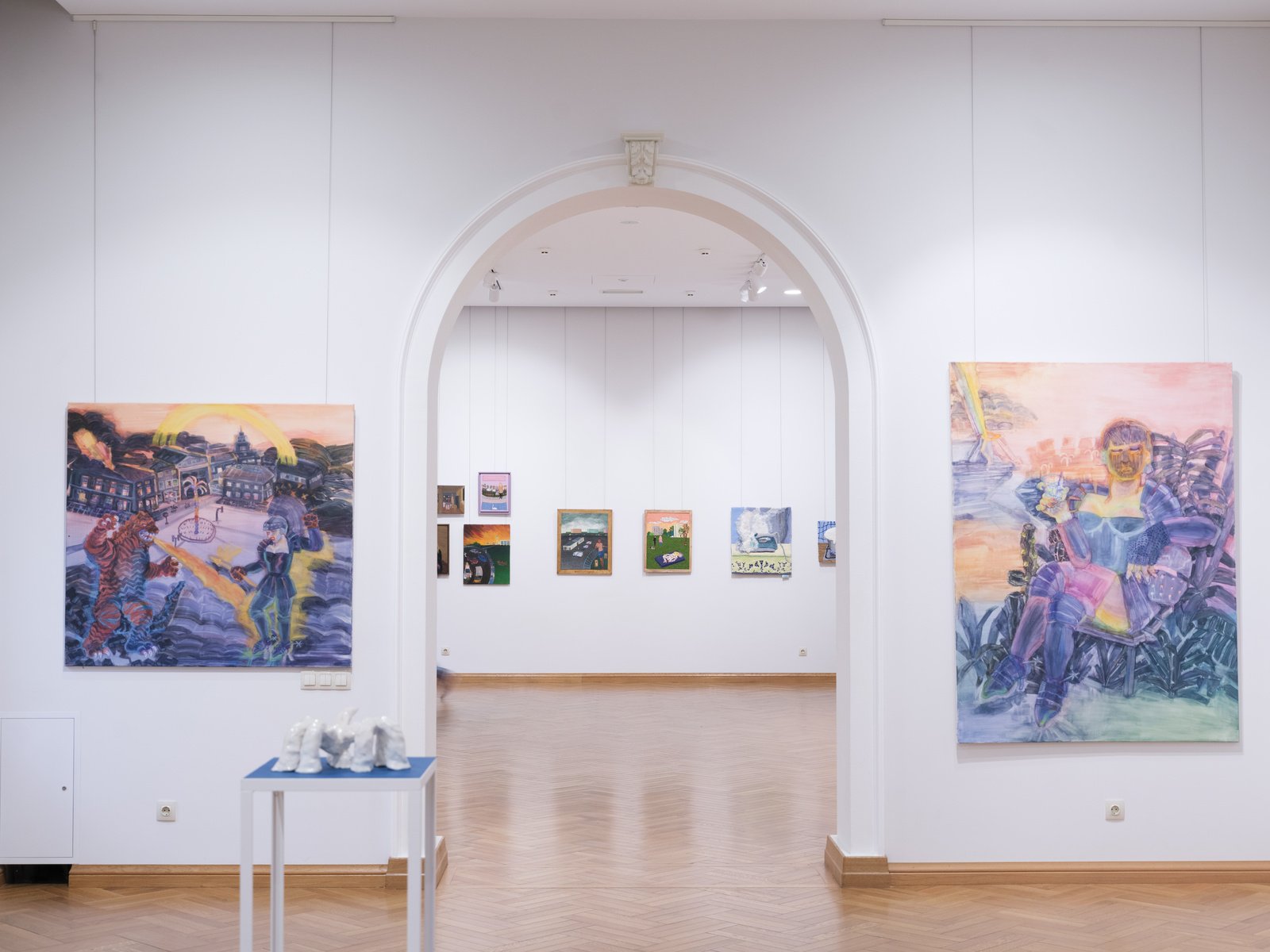
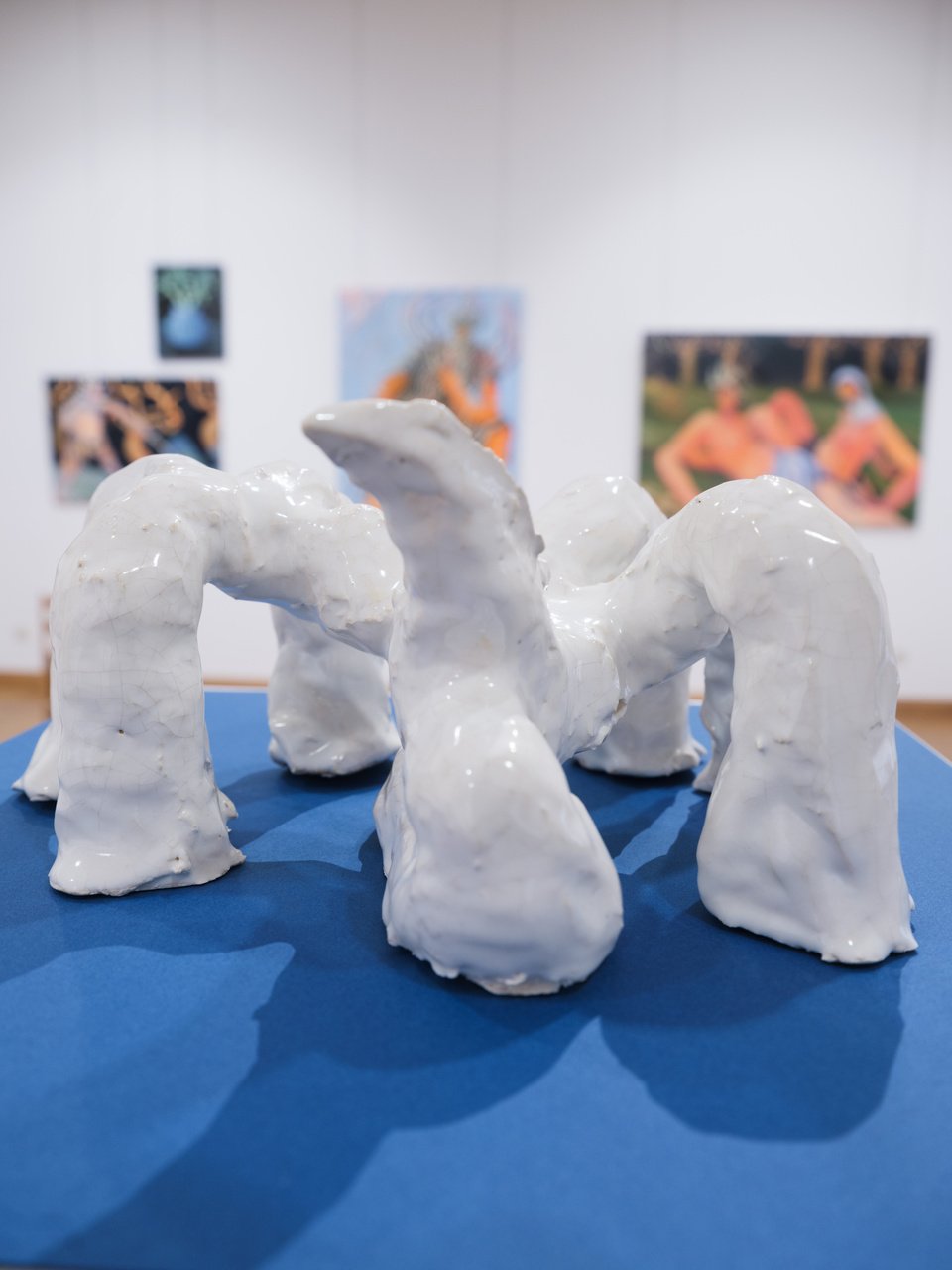

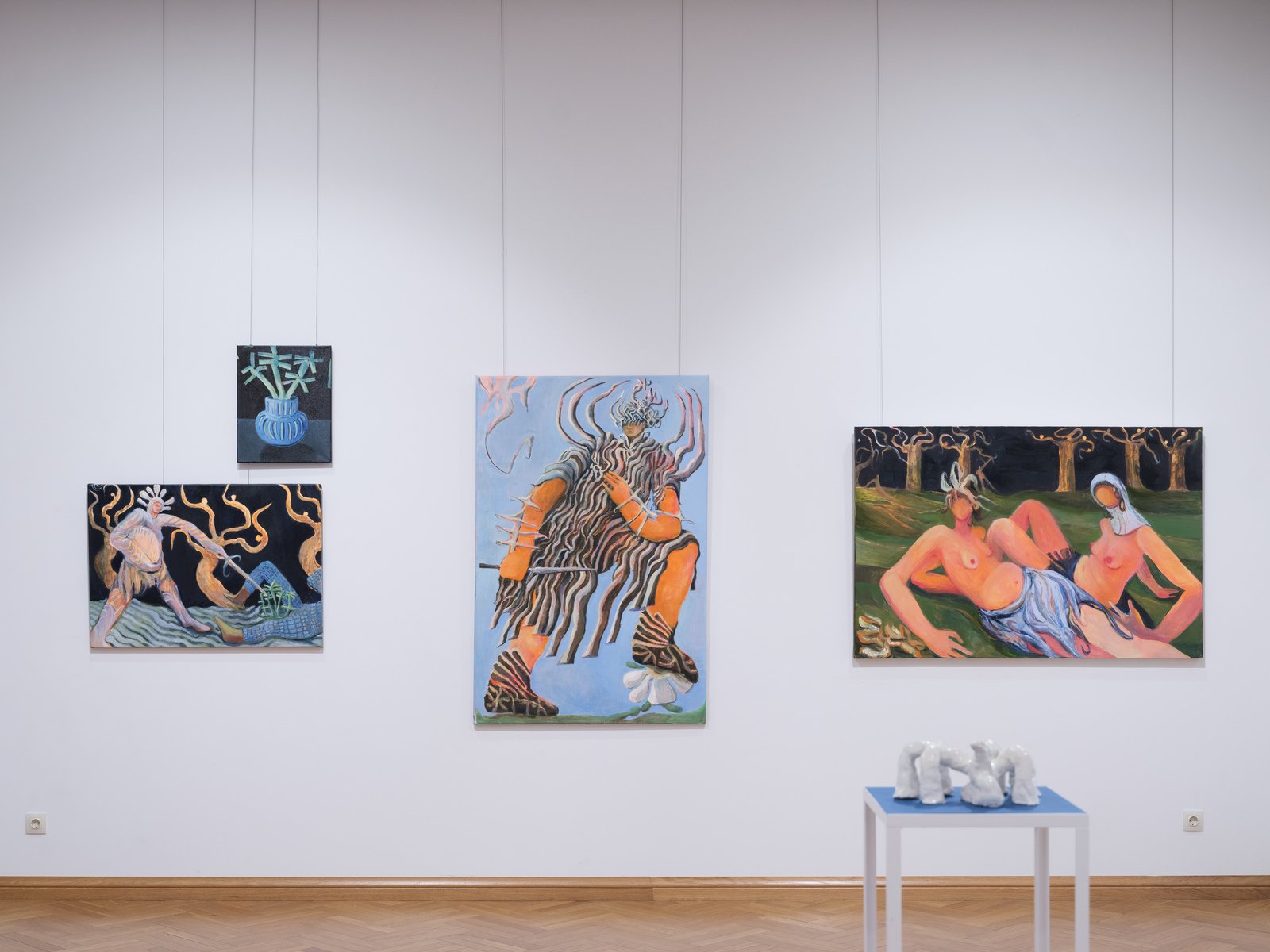
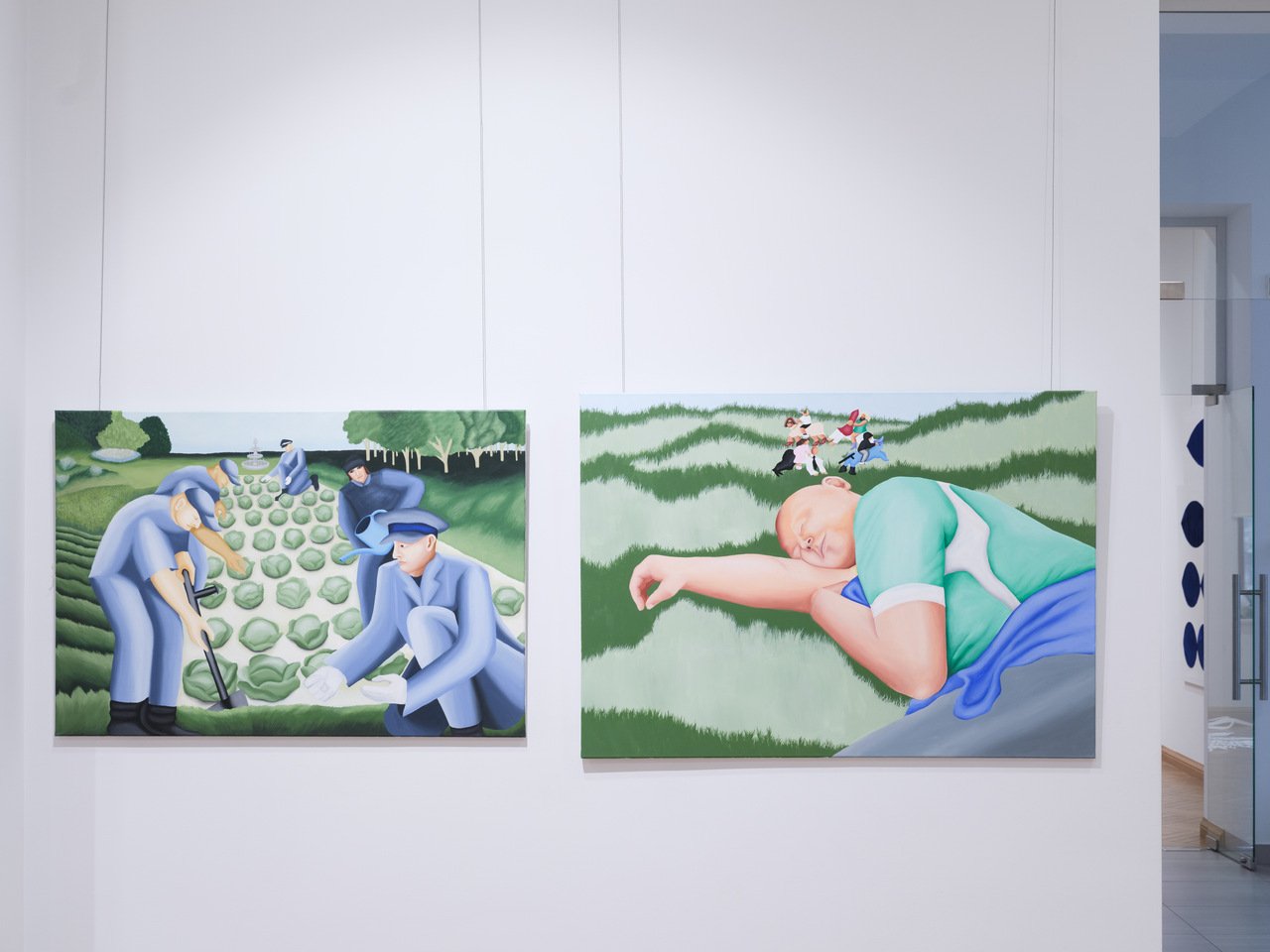
dreamt of having fun and of a beautiful carousel. They were spinning on it full of childlike joy,
and instead of plastic zebras or lions, they were riding people they knew were partly responsible for their discontent, 2022, Acrylic on canvas, 100 × 140 cm. Photo: Kuba Celej. Courtesy of Adam Mickiewicz Institute
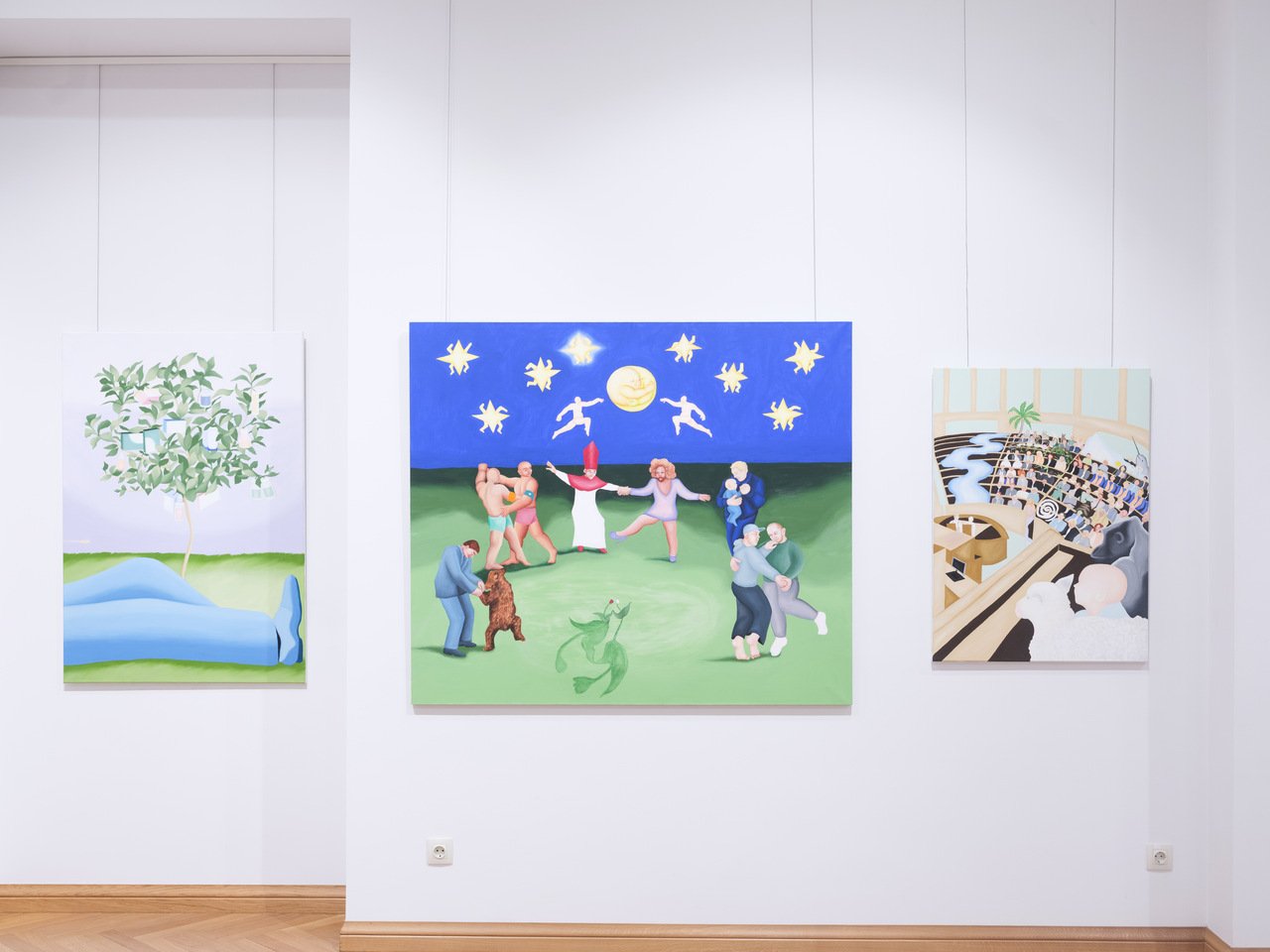
The second room, “Narratives,” gathered works where personal mythologies and emancipatory fantasies came to life. Through painting, Ania Grzymała envisions a future society resembling a fairy tale, Julia Woronowicz reimagins Polish history by replacing traditional male heroes with female warriors using fairytale imagery and wistful nostalgia, and Viola Plaga-Głowacka stages battles where female knights fight dragons – poignant metaphors for the women’s protests in contemporary Poland.
In “Carnal Geometry,” the room felt more abstract and self-reflective, inviting a deeper, introspective engagement. Artists like Kinga Popiela and Anna Panek merged rational geometric forms with the physicality of stitched textiles and bodily movements. To me, the forms and lines suggested a reflection on the self, the body, and the mind, in a more meditative sense. Meanwhile, Martyna Ścibior and Agata Bogacka reworked soft, indeterminate geometries with materials that subtly evoke gendered experience and sensuality, which was a helpful transition to the final room.


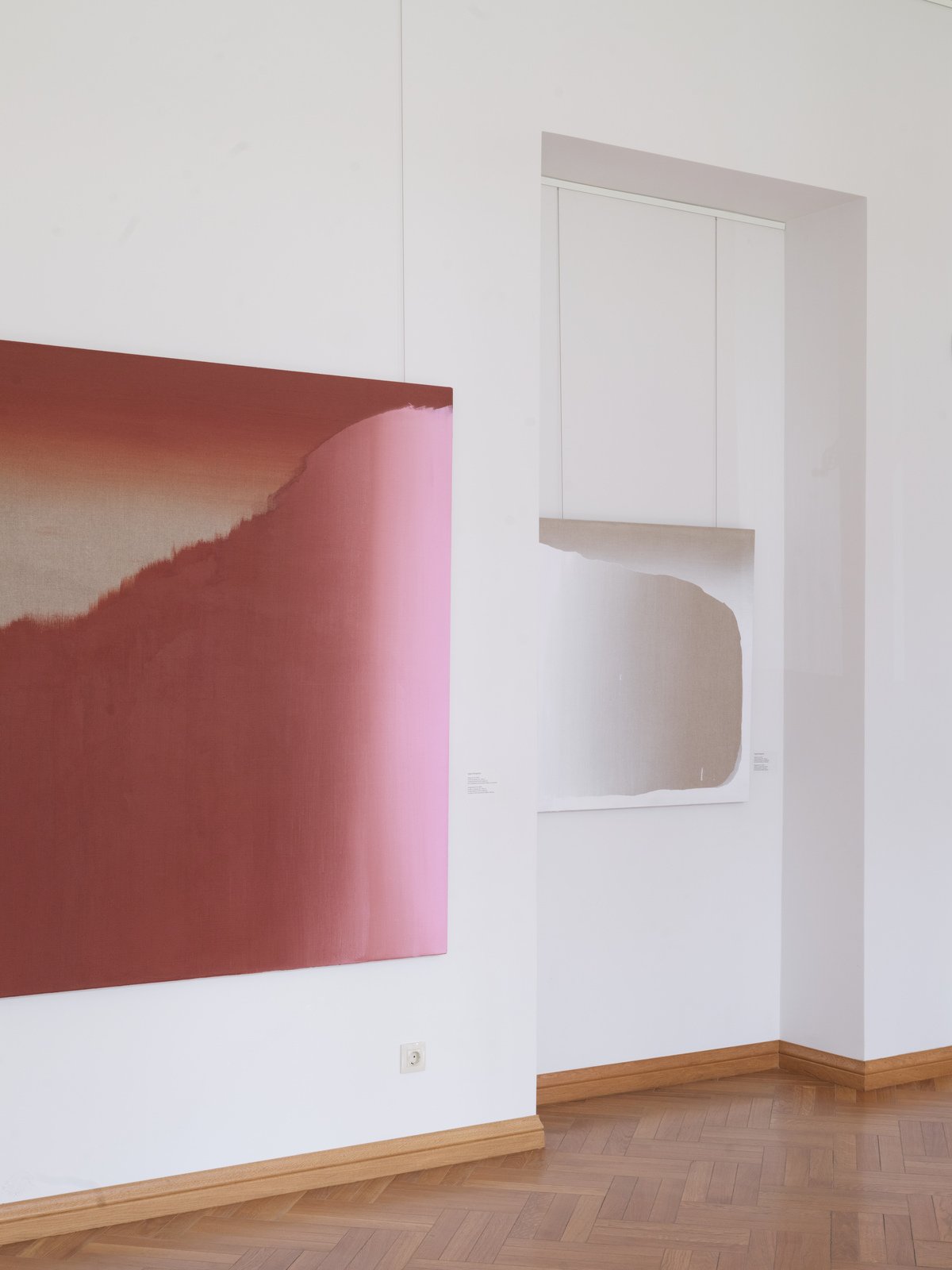

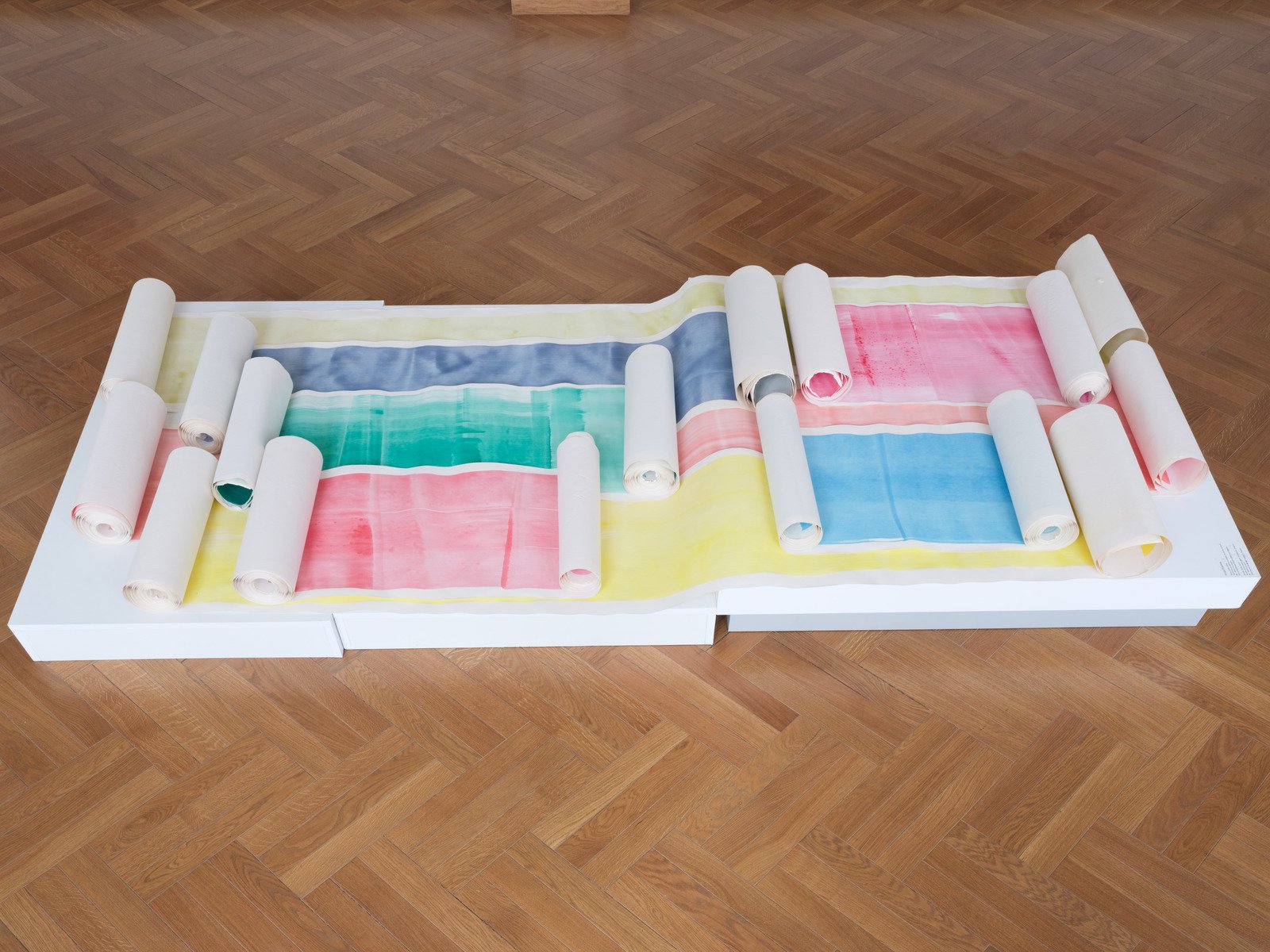
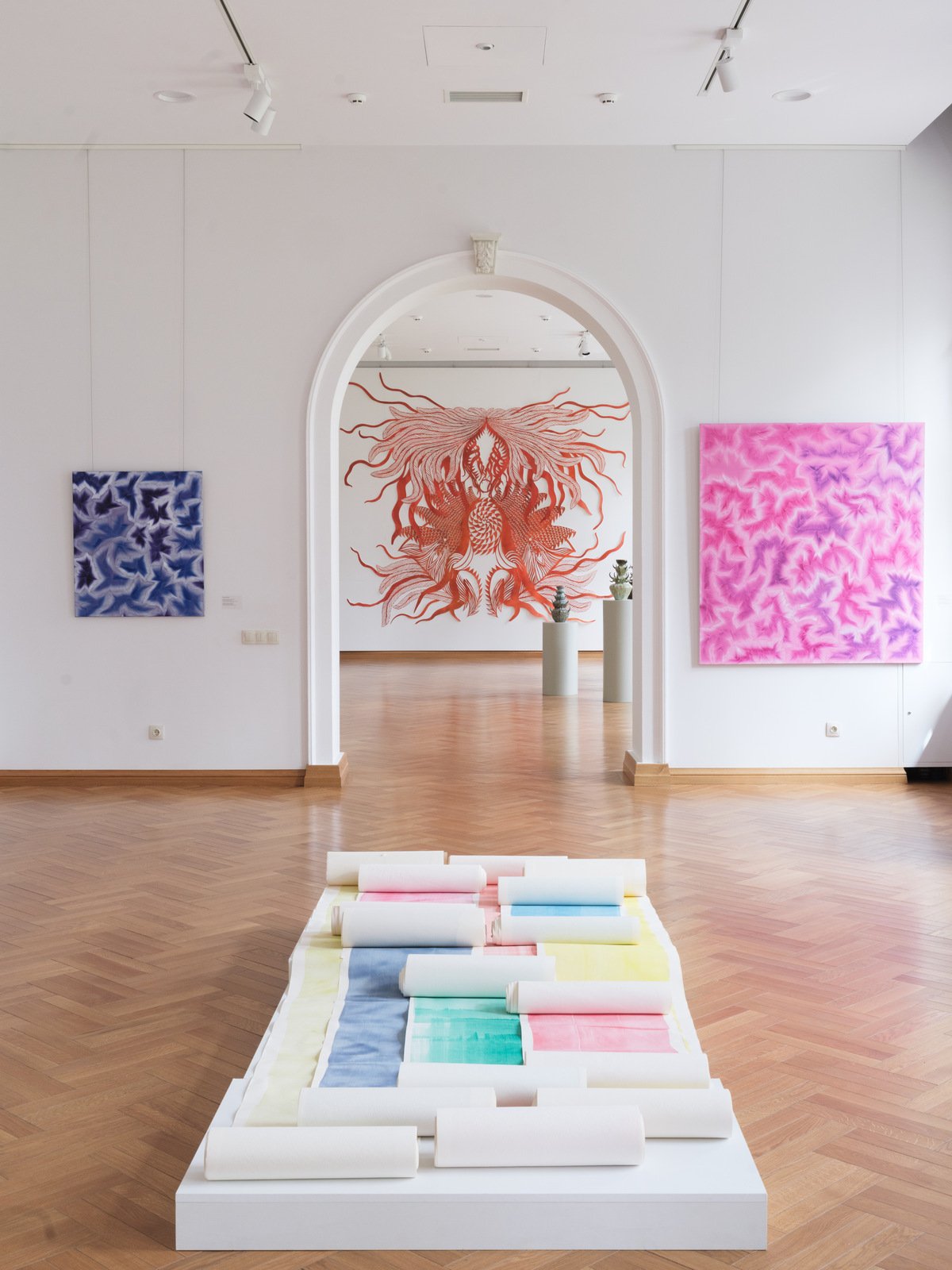
With “Whisperers,” the exhibition moved into a more symbolic territory, evoking pre-Christian imagery of witches, healers, and nature-bound feminine power. This final room featured paper cutouts by Nina Paszkowski, paintings by Natalia Bazowska and Martyna Borowiecka, shamanic sculptures by Aleksandra Liput, and vampire-like figures by Dorota Kuźnik, which created a landscape of works explored both fear and sensuality in an unfiltered, almost primal register. The ceramic forms by Aleksandra Liput felt like physical extensions of internal states, seeming to visually embody the emotions that are deeply rooted in the body, like a visual extension of what goes from our heads (thoughts) to our bodies (emotions). Their forms and sharpness reminded me of sea shells – natural objects shaped by time and mystery. It was like an interplay between something you might find hidden in the depths of the sea and something you might discover within yourself – a raw, emotional state surfacing into form. At least that’s how they appeared to me, especially within the context that was “Whispers,” where one could almost sense a more witchy or ritualistic energy, bridging the sacred and the earthly.
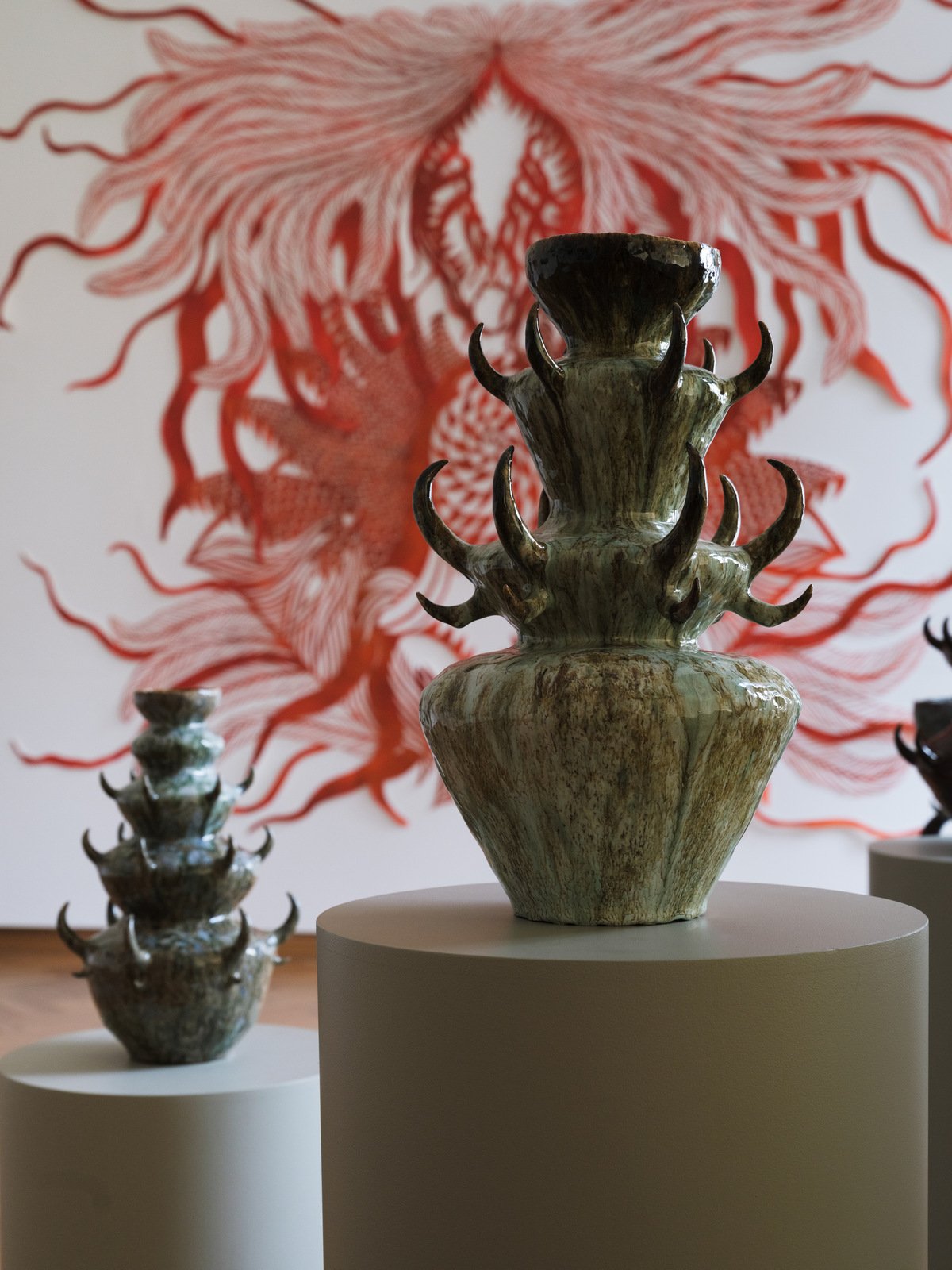
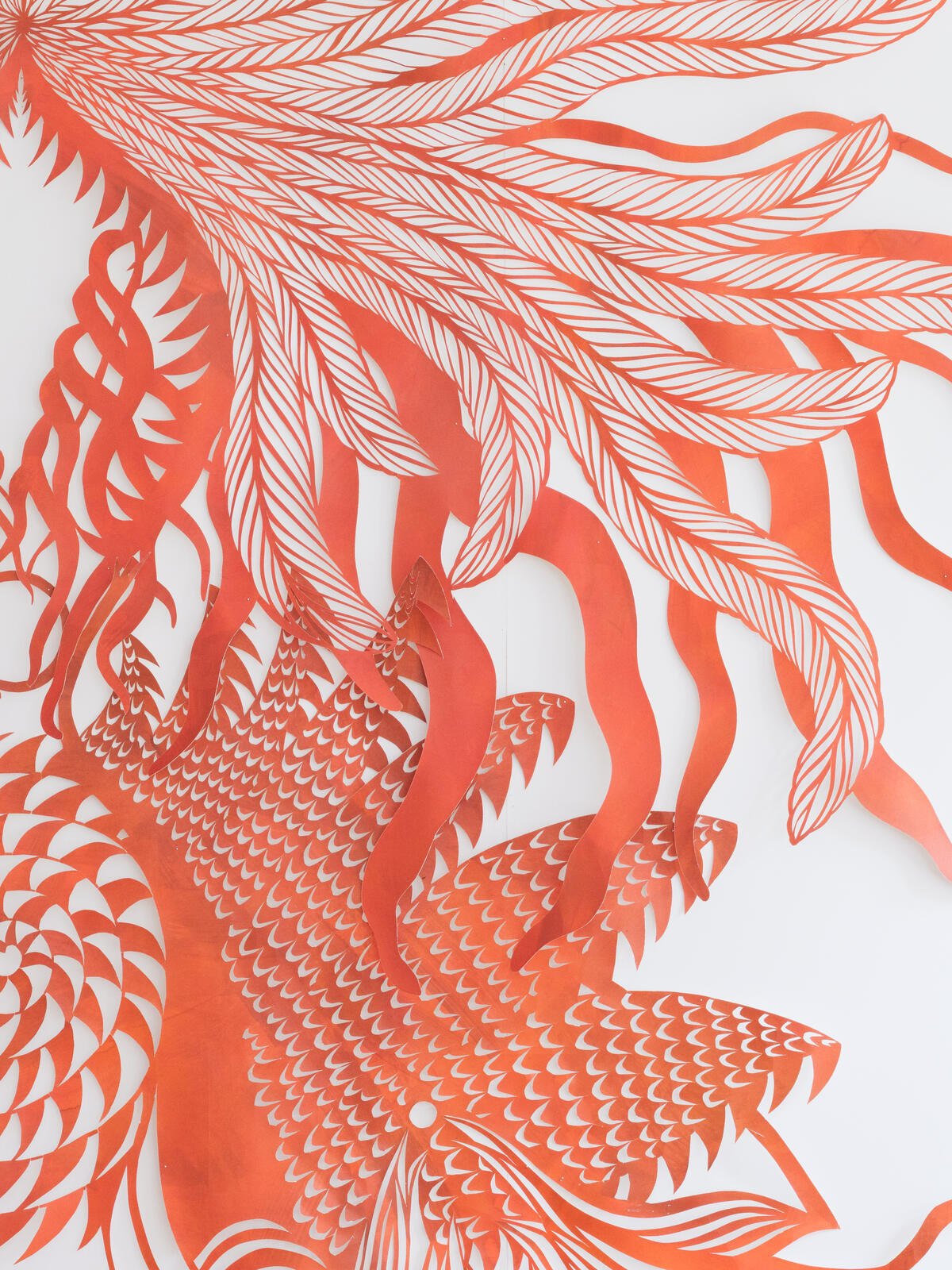
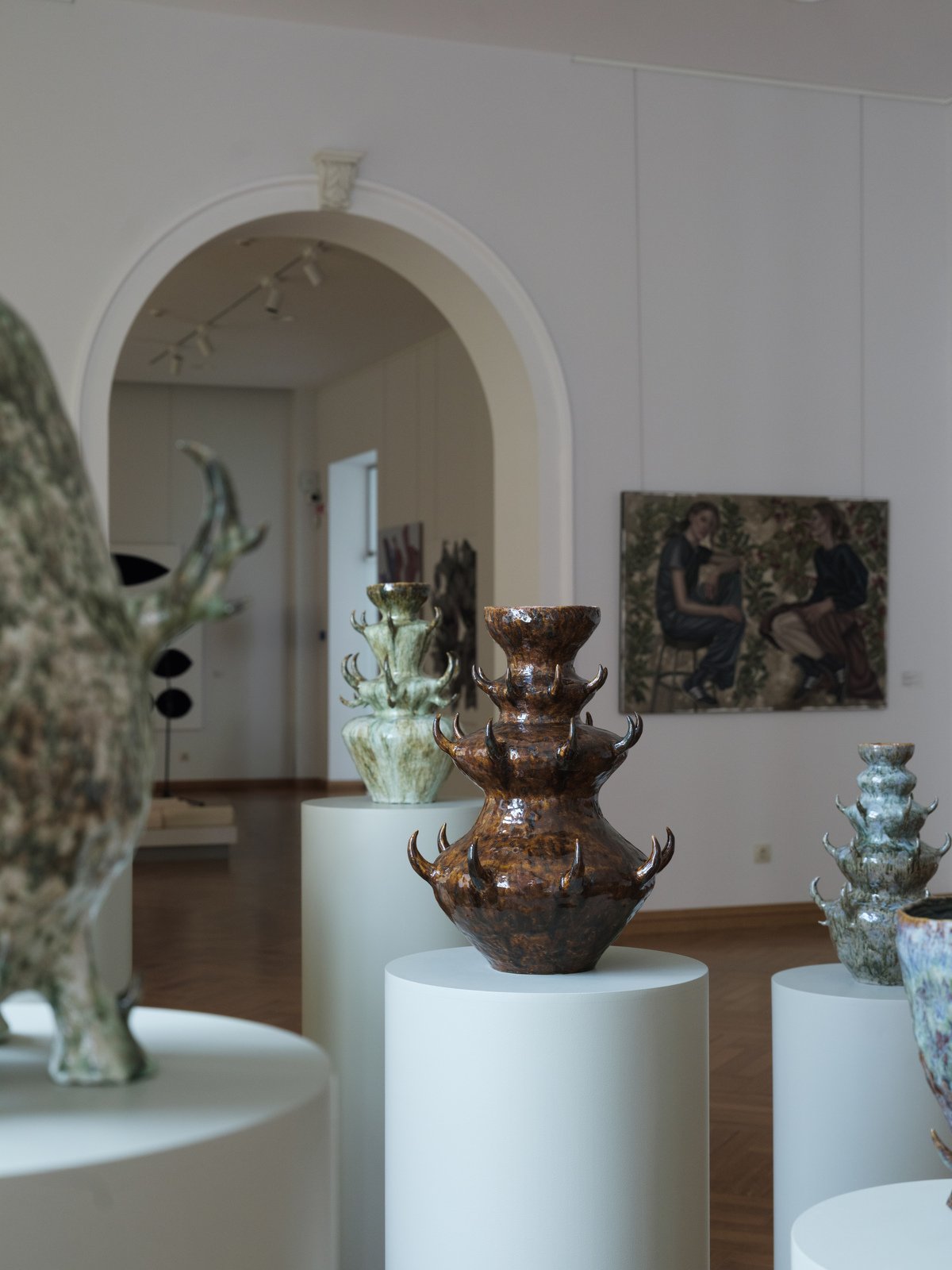
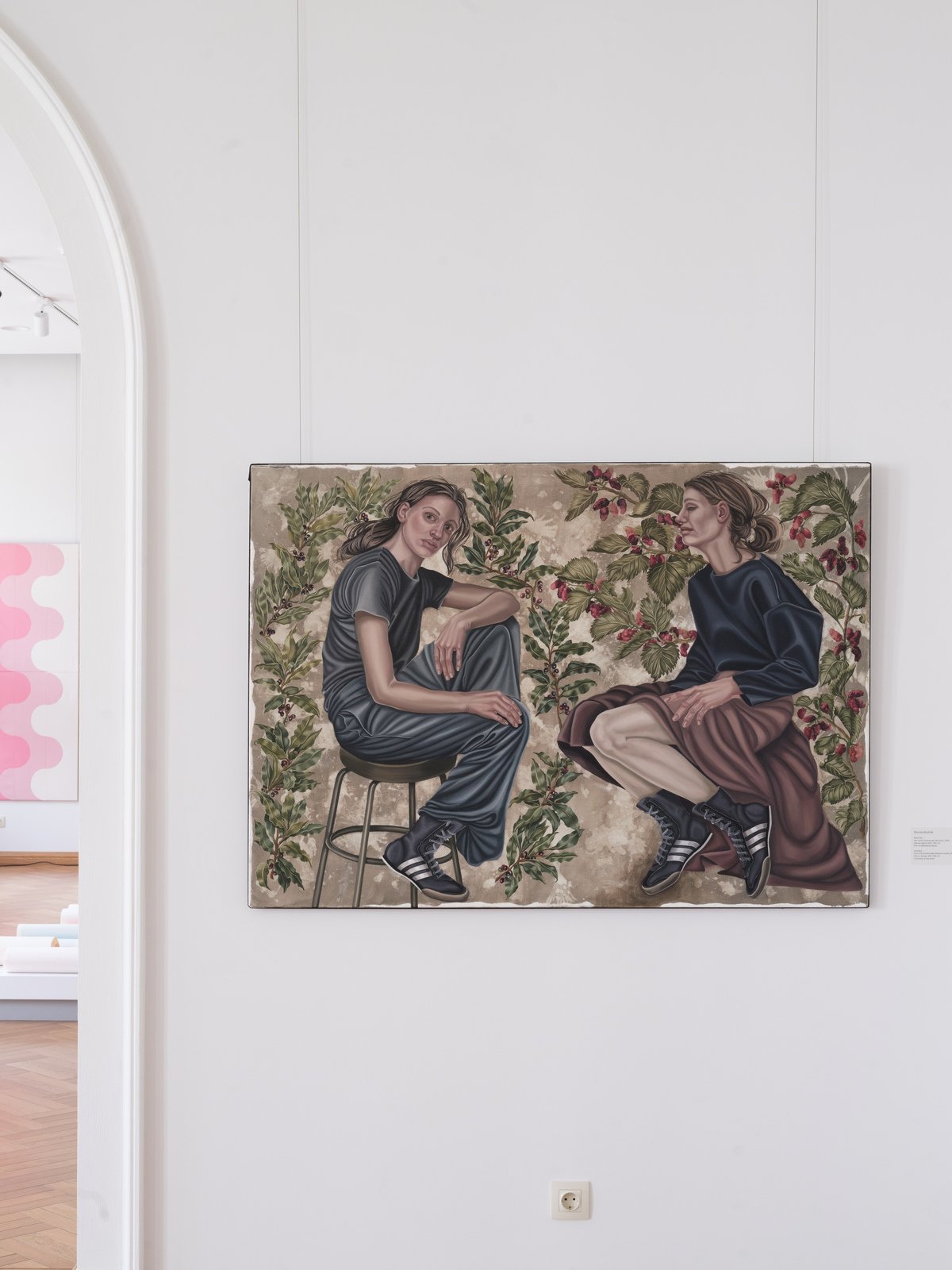
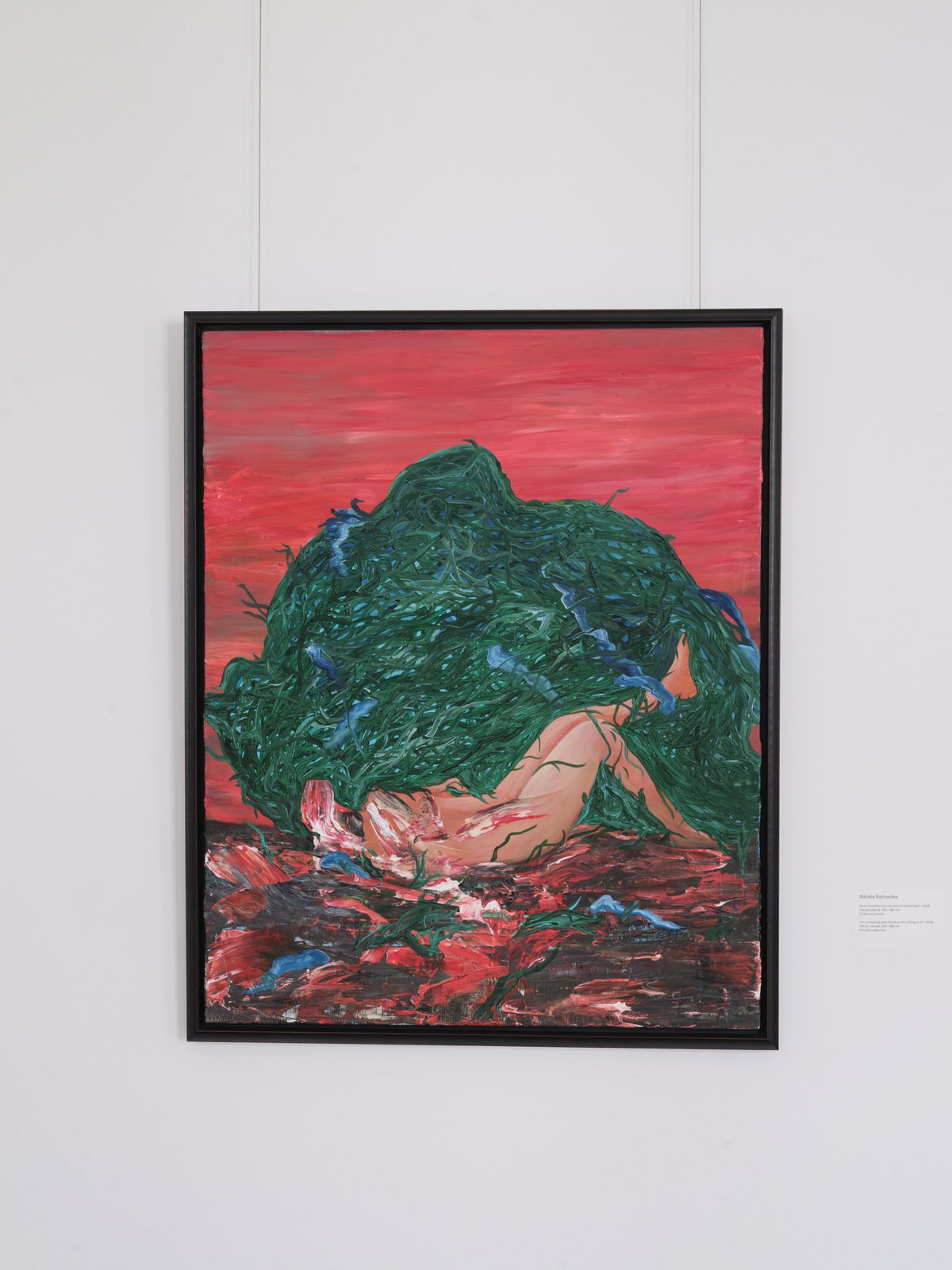
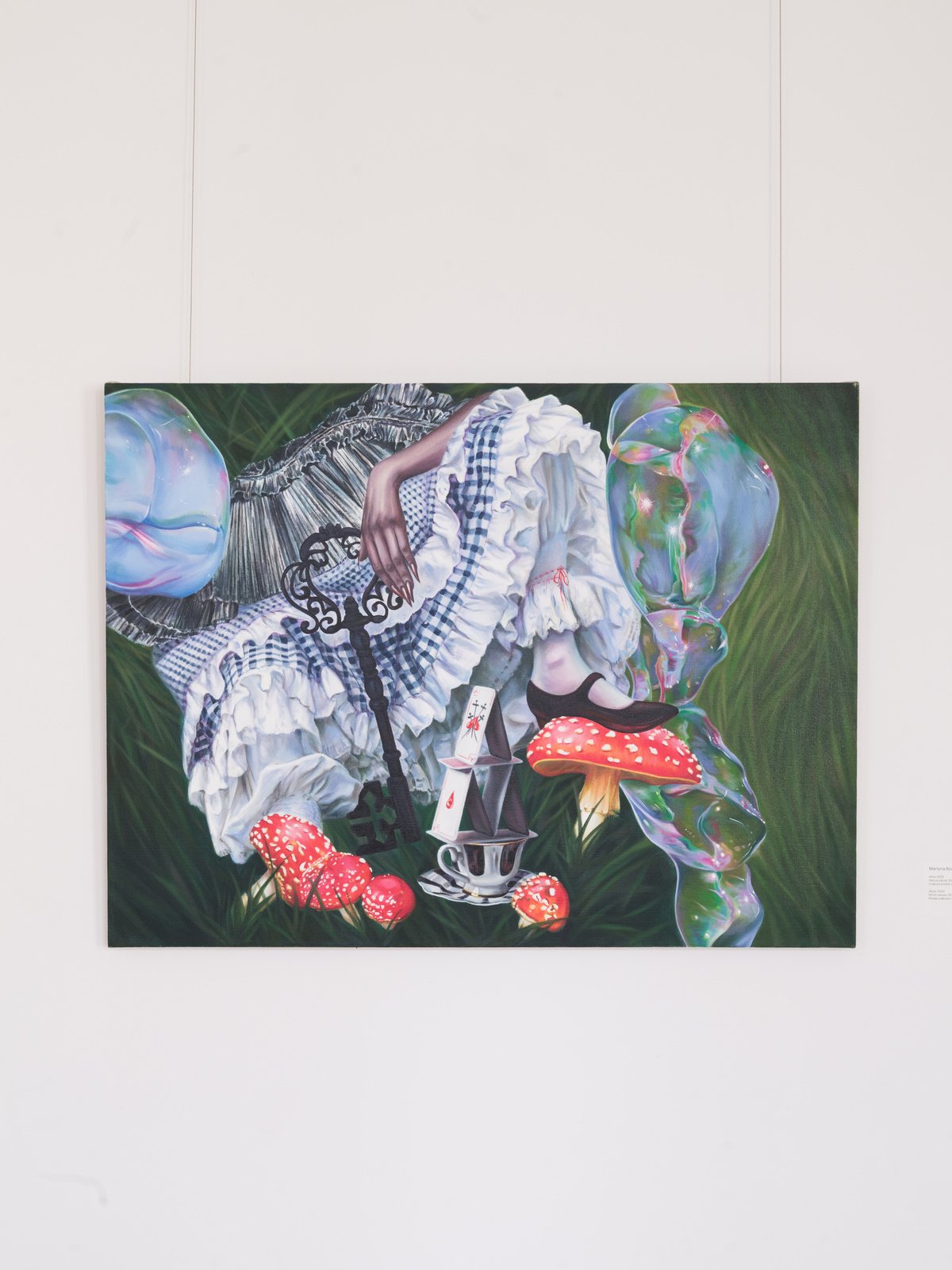
Throughout the exhibition, the artworks acted like a magnet, pulling attention to a particular tension, frustration, dream, memory, or cultural critique, often metaphorically encoded in shapes, textures, and techniques. The artworks functioned both as personal confessions and as declarations of position. In that sense, the exhibition was not only about representation but about a collective insistence on being seen rather than just interpreted, to articulate something that often remains unspoken, overlooked, or under-contextualized.
I struggled to find a coherent thread at first, but after looking at both ends of the exhibition rooms, seeing the exhibition as a whole, and from a different perspective – I realized that perhaps this was the very point. Not to impose coherence, but to mirror a spectrum; not just of themes but of sensibilities, of emotional familiarities, of inner worlds. This idea stayed with me while walking through the exhibition, not as a rigid methodology for reading the works but more like a quiet key, a way of allowing myself to receive rather than interpret. I didn’t want to over explain the pieces to myself. Instead, I let them unfold as if they were fragments of a shared dream. There’s something deeply human in the desire to tell stories, to weave bits of our inner life into metaphors, to leave a trace of our longing somewhere tangible.

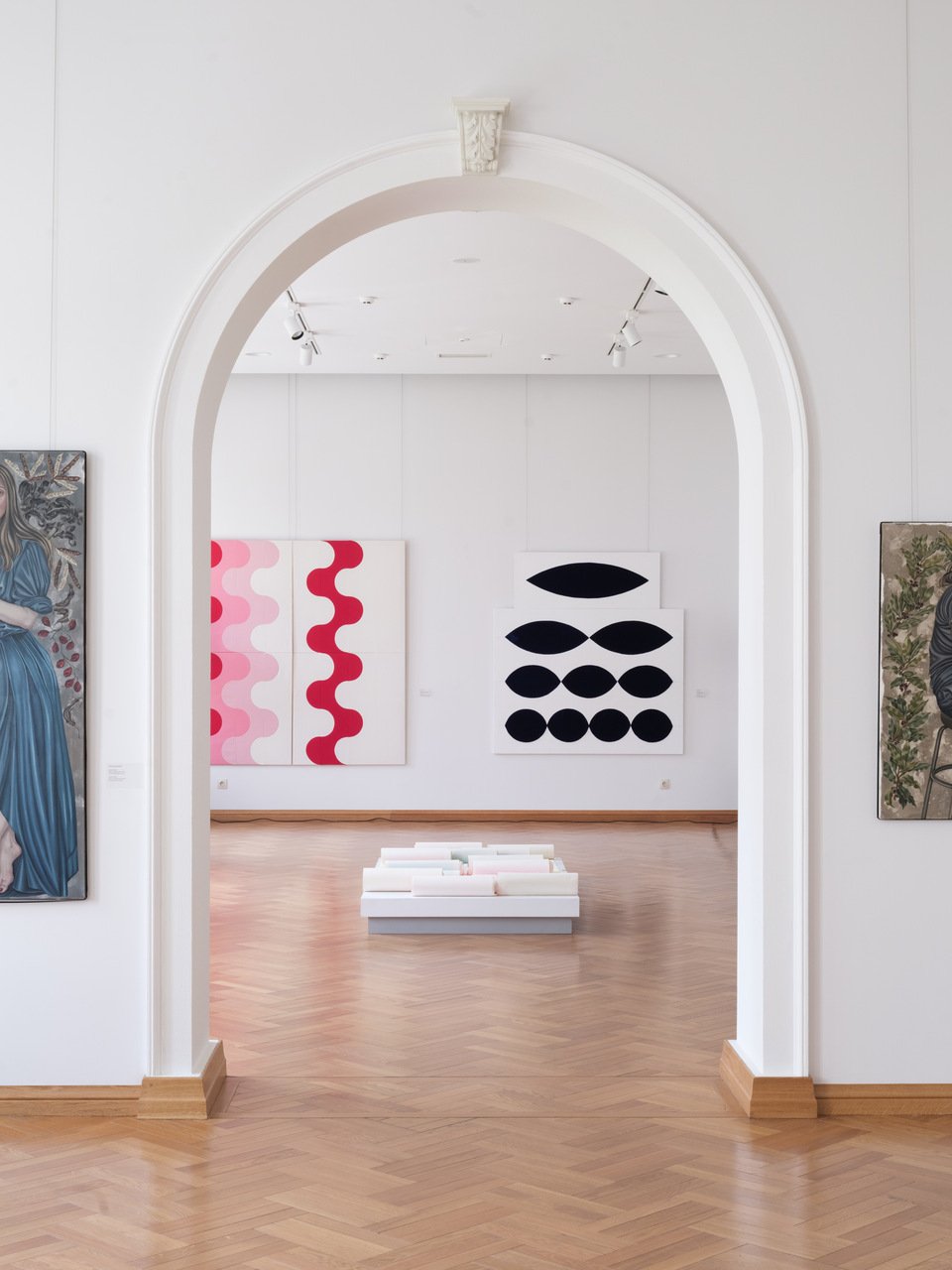
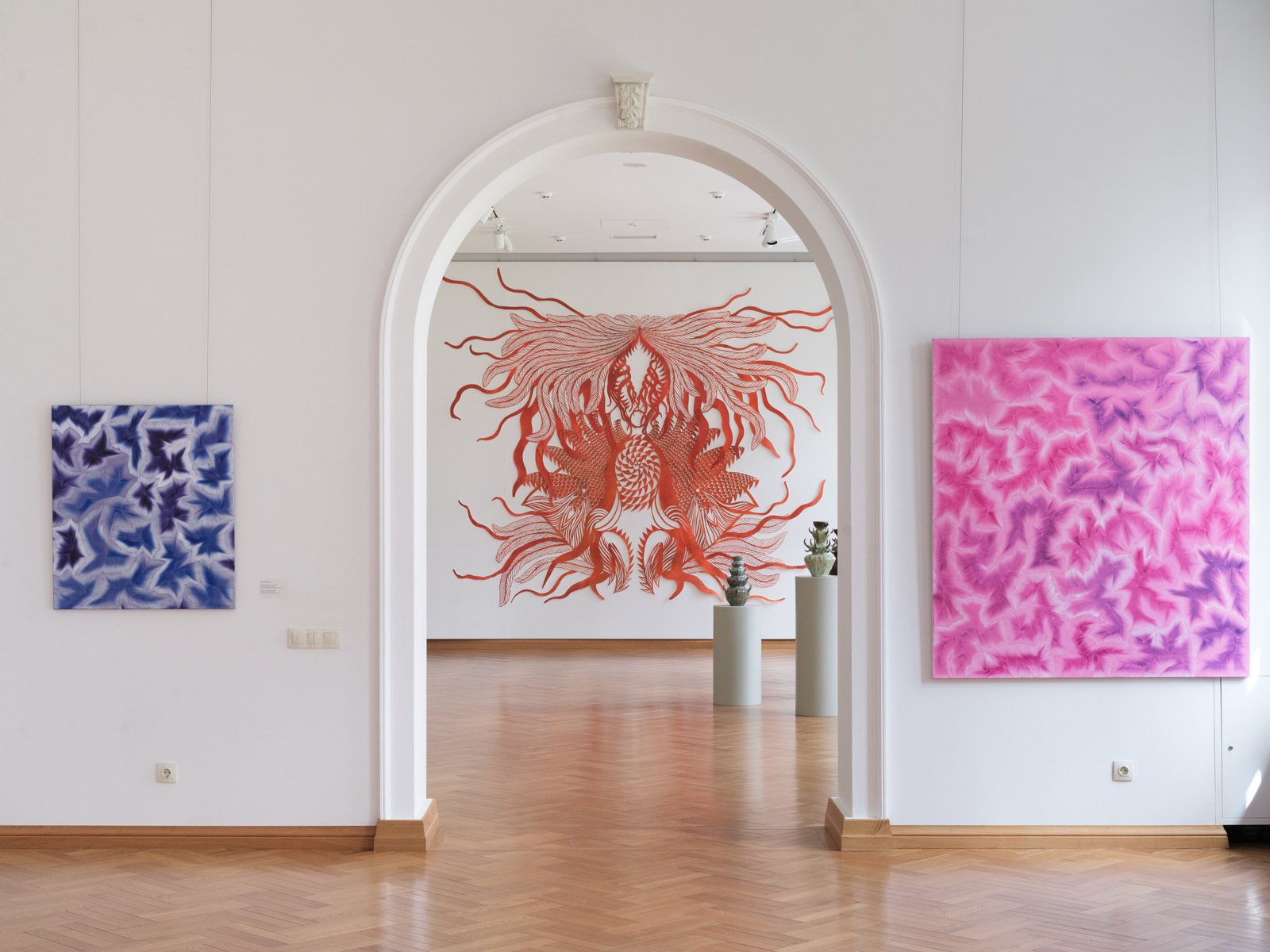
Maybe that’s what gives Lushness its promise. Many of these works felt like acts of learning to love oneself without guaranteed reward. Bold in their emotional clarity, this exhibition worked like a declaration that women were always part of the same emotional web that needs to be acknowledged and shared. This familiarity, for me, stems first from an emotional place, rooted in the subtle, shared connections between women, especially in moments of everyday activities, like sitting together and playing cards, having tea or coffee and a bit of gossip. Scenes like this have always made me feel comfortable and safe, perhaps because they echo memories from my own childhood of elderly women at peace with their routines, engaging with neighbours or family members, even in less peaceful times. This resonance, I believe, comes not only from lived experience but from the often invisible bonds between women, a kind of inherited empathy – the ability to intuit someone else’s inner state without explicit cues or explanation. On a deeper level, it also has political implications, especially for me as a Moldovan. Living in a country where people often leave in search of better opportunities, choosing to stay and embrace the challenges of staying, truly resonates with me. While I don’t know the personal stories of the artists’ behind the pieces in the exhibition, I felt a similar kind of connection and want to understand and navigate the complexities of the worlds they live in.
Girlhood is not a phase, but a territory – wide and changing, holding within it rebellion, softness, sensuality, silence, sorrow, and hope. And this exhibition seemed to make room for all of it, even if that tension between wanting coherence and surrendering to multiplicity stayed with me until I left. As a viewer, I was glad to encounter fragments of the younger and more emerging art scene in Poland, particularly through the lens of these sixteen artists. It felt significant from its cultural context and also, because it offered a view into how this generation of artists negotiates visibility, identity, and expression.
This exhibition was co-organized by the Adam Mickiewicz Institute, part of the international cultural program of the Polish Presidency of the Council of the European Union 2025.
Artists: Agata Kus, Marta Nadolle, Karolina Balcer, Małgorzata Mirga-Tas, Ania Grzymała, Julia Woronowicz, Viola Plaga-Głowacka, Nina Paszkowski, Natalia Bażowska, Aleksandra Liput, Martyna Borowiecka, Dorota Kuźnik, Kinga Popiela, Anna Panek, Martyna Ścibior, Agata Bogacka
Exhibition Title: Lushness. Women’s Art in the 21st Century
Curated by: Dorota Monkiewicz
Venue: National Art Museum of Moldova
Place (Country/Location): Chișinău, Moldova
Dates: 04.04 – 18.05.2025
Photos: Kuba Celej. Courtesy of the Adam Mickiewicz Institute
